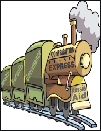Fulfilling prophecy? Sexually transmitted infections and HIV in Indigenous people in Western Australia
Abstract
Objective: To compare trends and rates of HIV and sexually transmitted infections in Indigenous and non-Indigenous people of Western Australia.
Design and setting: Analysis of WA notification data for chlamydia, gonorrhoea, and primary and secondary syphilis in 2002, and for HIV infections from 1983 to 2002.
Main outcome measures: Rates of HIV and sexually transmitted infection by Indigenous status.
Results: In 2002, there were 3046 notifications for chlamydia, 1380 for gonorrhoea and 64 for syphilis. When information on Indigenous status was available, Indigenous people accounted for 41% of chlamydia and 76% of gonorrhoea notifications, with Indigenous : non-Indigenous age-standardised rate ratios of 16 (95% CI, 14–17) and 77 (95% CI, 67–88), respectively. Indigenous people accounted for 90.6% of syphilis notifications (age-standardised Indigenous : non-Indigenous rate ratio, 242 [95% CI, 104–561]). From 1985 to 2002, HIV notification rates for non-Indigenous people in WA declined and rates for Indigenous people increased. From 1994 to 2002, there were 421 notifications of HIV infection in WA residents, 52 (12.4%) in Indigenous people and 369 (87.6%) in non-Indigenous people. Indigenous people accounted for 39% and 6.2% of all notifications in WA females and males, respectively. The Indigenous : non-Indigenous rate ratios were 18 (95% CI, 12–29) for females and 2 (95% CI, 1–3) for males.
Conclusions: Indigenous Western Australians are at greater risk of HIV transmission than non-Indigenous people. Strategies to prevent further HIV infection in Indigenous Australians should include control of sexually transmitted infections.




